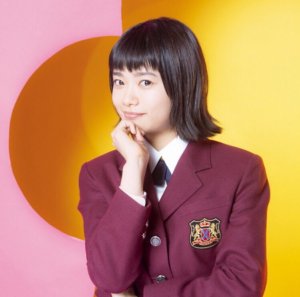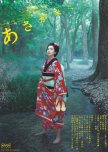This review may contain spoilers
"First Penguin"
"Asa ga Kita" is the fifteenth asadora I've watched. While watching the last six weeks of episodes, I realized that the story sounded familiar. Naturally, I looked up the woman whom Shirooka Asa (played by Haru) is based on. Her real name was Hirooka Asako by the way. Finally, it clicked and a pulled out the book, "Anne's Cradle: The Life & Works of Hanako Muraoka." This book serves as the basis for the 2014 asadora, "Hanako to Anne," which was also my first asadora. The author dedicates a few pages to Hirooka Asako, whom Hanako met when Asako was in her sixties and she apparently influenced some Hanako's feminist leanings. I'll include this quote by Asako, which influenced Hanako and others Japanese women of the time:
"From here on, politics will be crucial. Unless we raise up female politicians active in governing this country, true emancipation for women can never be achieved. We must start by obtaining the right to choose our leaders, the right to vote, just as women in other countries have done. You must work together for the same goal."
Another Japanese feminist, Hiratsuka Raicho, who appears in the final week of "Asa ga Kita," is also mentioned in this biography. I'm including this in my review not just because it's interesting but to highlight that "Asa ga Kita" is one of the more overt feminist asadoras. It doesn't exactly "go there." For example, there's no mention of women's right to vote. And, as much as I wish it had gone there, my hat goes to it for even touching what it does. You could argue that all asadoras are feminist, but in a more sanitized way in my opinion. "Asa ga Kita" highlights the strength, problems, and progress of women during the Meiji era, a much more oppressive time period than when most asadora are set.
Speaking of time period, "Asa ga Kita" begins in 1857 and is set mostly during the Meiji era. This is a very interesting time period for Japan and really laid out the groundwork for what modern day Japan is. Also interestingly, this is the earliest time period for an asadora. (NHK appears to reserve this time period for their taiga dramas instead.) The asadora starts off with traditional kimono and topknots, and by the end there are dresses and cropped hairstyles everywhere. It's an interesting dichotomy and serves as a good example for the changes of the era. Moving on from history...
The best part of "Asa ga Kita" are the characters, of course. Haru plays the pioneering businesswoman Shirooka Asa, a tomboy who questions why women can't learn. Miyazaki Aoi plays her sister Hatsu, a traditionally feminine girl with a hidden strength. Hatsu is often the secondary main character, but the narrative smartly recognizes when her story isn't as interesting as Asa's and we won't see her for a while. Nevertheless, we follow her throughout her life and her romance with her husband Sobei (Emoto Tasuku) is very compelling. Next, we have Asa's husband Shinjiro, a man who prefers to indulge in his various hobbies instead of participate in the family business. Even though, he sounds like a "useless" man, he is played perfectly by Tamaki Hiroshi, giving him both humor and humanity. As a husband, he is always supportive of Asa which only makes him more endearing.
Asa's and Shinjiro's only daughter, Chiyo (Koshiba Fuka), comes off as very annoying at first, being the opposite of Asa but also not seeing the value of someone like Asa. I thought she was going to fall into the trap of other asadora children at this point. Thankfully, the writers have here come to appreciate Asa though Chiyo remains the complete opposite of her nonetheless. The final character I'd like to talk about is Godai Tomoatsu (based on a real figure and played by Dean Fujioka. He is what every second male lead should be. Someone who doesn't impose his feelings on the FL and just supports her from afar. Honestly, he had my heart beating fast at certain points. There are a plethora of other side characters who are all endearing in their own way.
"Asa ga Kita" surprisingly has four romantic couples to get invested in. Asa and Shinjiro are the best of course and are now my favorite asadora couple ever. Hatsu and Sobei are super sweet together despite their rough start. Kisuke and Fuyu seem kind of mismatched but I couldn't help rooting for them. I was a bit sad that Fuyu doesn't appear again after their marriage, but I suppose that Kiyohara Kaya (see Natsuzora, Okaeri Mone) just appeared too young at the time. Lastly, there's Gansuke and Ume, a couple that doesn't need to be together to know that they love each other. Honestly, I felt very spoiled with the amount of couples in this one.
Okay, this review is getting to long so let's wrap it up. "Asa ga Kita" includes everything you could want in an asadora and then some. I recommend this to old and new asadora watchers alike. (I hope I didn't spoil it too much.) If you're looking for a next watch after this one, I recommend the 2024 asadora "Tora ni Tsubasa" which explores similar feminist ideas as "Asa ga Kita" but in a more "in your face" way. Happy watching!
"From here on, politics will be crucial. Unless we raise up female politicians active in governing this country, true emancipation for women can never be achieved. We must start by obtaining the right to choose our leaders, the right to vote, just as women in other countries have done. You must work together for the same goal."
Another Japanese feminist, Hiratsuka Raicho, who appears in the final week of "Asa ga Kita," is also mentioned in this biography. I'm including this in my review not just because it's interesting but to highlight that "Asa ga Kita" is one of the more overt feminist asadoras. It doesn't exactly "go there." For example, there's no mention of women's right to vote. And, as much as I wish it had gone there, my hat goes to it for even touching what it does. You could argue that all asadoras are feminist, but in a more sanitized way in my opinion. "Asa ga Kita" highlights the strength, problems, and progress of women during the Meiji era, a much more oppressive time period than when most asadora are set.
Speaking of time period, "Asa ga Kita" begins in 1857 and is set mostly during the Meiji era. This is a very interesting time period for Japan and really laid out the groundwork for what modern day Japan is. Also interestingly, this is the earliest time period for an asadora. (NHK appears to reserve this time period for their taiga dramas instead.) The asadora starts off with traditional kimono and topknots, and by the end there are dresses and cropped hairstyles everywhere. It's an interesting dichotomy and serves as a good example for the changes of the era. Moving on from history...
The best part of "Asa ga Kita" are the characters, of course. Haru plays the pioneering businesswoman Shirooka Asa, a tomboy who questions why women can't learn. Miyazaki Aoi plays her sister Hatsu, a traditionally feminine girl with a hidden strength. Hatsu is often the secondary main character, but the narrative smartly recognizes when her story isn't as interesting as Asa's and we won't see her for a while. Nevertheless, we follow her throughout her life and her romance with her husband Sobei (Emoto Tasuku) is very compelling. Next, we have Asa's husband Shinjiro, a man who prefers to indulge in his various hobbies instead of participate in the family business. Even though, he sounds like a "useless" man, he is played perfectly by Tamaki Hiroshi, giving him both humor and humanity. As a husband, he is always supportive of Asa which only makes him more endearing.
Asa's and Shinjiro's only daughter, Chiyo (Koshiba Fuka), comes off as very annoying at first, being the opposite of Asa but also not seeing the value of someone like Asa. I thought she was going to fall into the trap of other asadora children at this point. Thankfully, the writers have here come to appreciate Asa though Chiyo remains the complete opposite of her nonetheless. The final character I'd like to talk about is Godai Tomoatsu (based on a real figure and played by Dean Fujioka. He is what every second male lead should be. Someone who doesn't impose his feelings on the FL and just supports her from afar. Honestly, he had my heart beating fast at certain points. There are a plethora of other side characters who are all endearing in their own way.
"Asa ga Kita" surprisingly has four romantic couples to get invested in. Asa and Shinjiro are the best of course and are now my favorite asadora couple ever. Hatsu and Sobei are super sweet together despite their rough start. Kisuke and Fuyu seem kind of mismatched but I couldn't help rooting for them. I was a bit sad that Fuyu doesn't appear again after their marriage, but I suppose that Kiyohara Kaya (see Natsuzora, Okaeri Mone) just appeared too young at the time. Lastly, there's Gansuke and Ume, a couple that doesn't need to be together to know that they love each other. Honestly, I felt very spoiled with the amount of couples in this one.
Okay, this review is getting to long so let's wrap it up. "Asa ga Kita" includes everything you could want in an asadora and then some. I recommend this to old and new asadora watchers alike. (I hope I didn't spoil it too much.) If you're looking for a next watch after this one, I recommend the 2024 asadora "Tora ni Tsubasa" which explores similar feminist ideas as "Asa ga Kita" but in a more "in your face" way. Happy watching!
Was this review helpful to you?

























